 |
|
DAY THREE: leaving Yellowstone
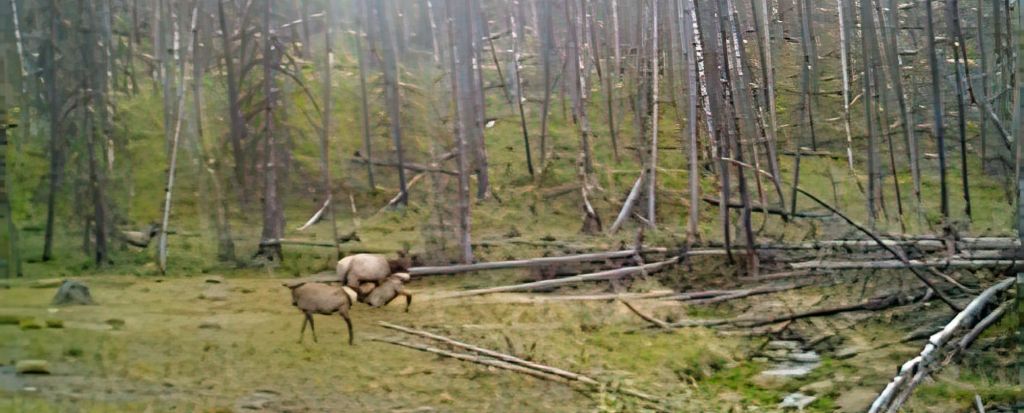 Another morning ride (by car this time) in Yellowstone. Early
morning is the best time to see the park: very few tourist, and more animals around, sometimes very close to the roads. We saw a big elk, no more than 25 meters from the road, and a lot of bison (on the
road). But this time it was the landscape that impressed us most. Yellowstone has huge valleys with grass only, and hills full of pines, and very beautiful creeks, side b Another morning ride (by car this time) in Yellowstone. Early
morning is the best time to see the park: very few tourist, and more animals around, sometimes very close to the roads. We saw a big elk, no more than 25 meters from the road, and a lot of bison (on the
road). But this time it was the landscape that impressed us most. Yellowstone has huge valleys with grass only, and hills full of pines, and very beautiful creeks, side b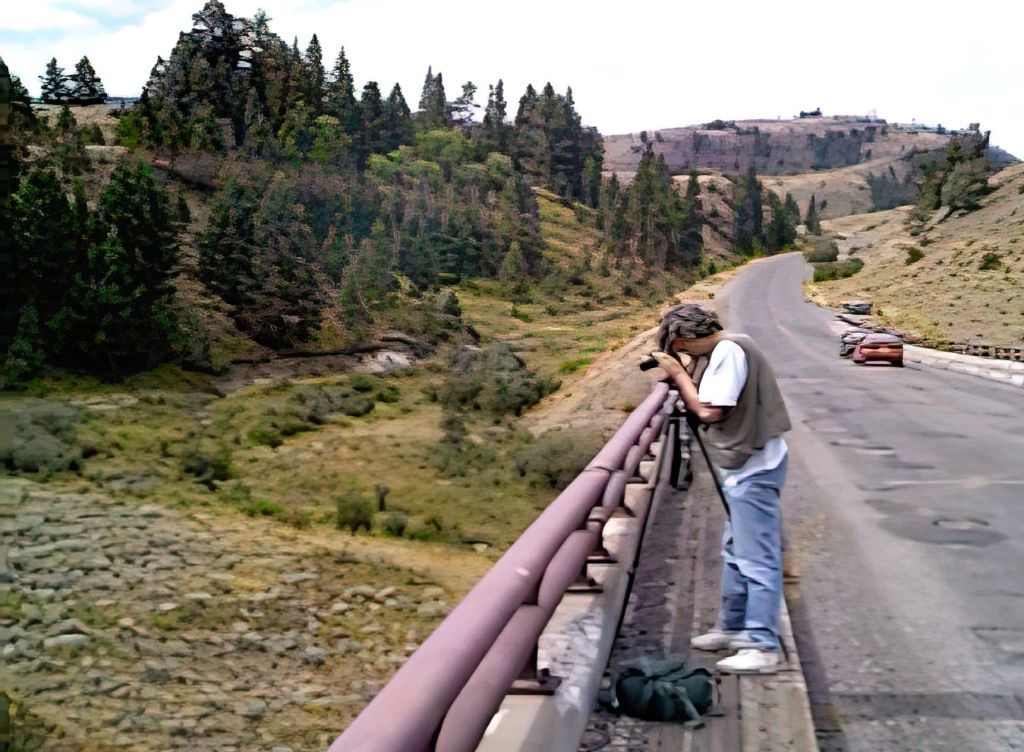 y side with this exquisite moonlike
landscape, with hot springs, and mudholes. Sometimes you see bubbles in the lakes and steam coming out of the creek, and you know there is a hot spring there. The animals don't seem a bit disturbed
by this unique composition. Just the opposite. In Mamoth Hot Springs, we saw two families of pronghorn deer calmly resting by the hot springs, paying no attention to the tourists in the walk boards
(due to the very thin crust around them, the hot springs are off limits to tourists). y side with this exquisite moonlike
landscape, with hot springs, and mudholes. Sometimes you see bubbles in the lakes and steam coming out of the creek, and you know there is a hot spring there. The animals don't seem a bit disturbed
by this unique composition. Just the opposite. In Mamoth Hot Springs, we saw two families of pronghorn deer calmly resting by the hot springs, paying no attention to the tourists in the walk boards
(due to the very thin crust around them, the hot springs are off limits to tourists).
|
|
We also saw all around the park full, huge hill with burned, dead trees. From far away you see the grey hill mixing with the healthy green ones, and you know that this is a reminder of the 1988 fires.
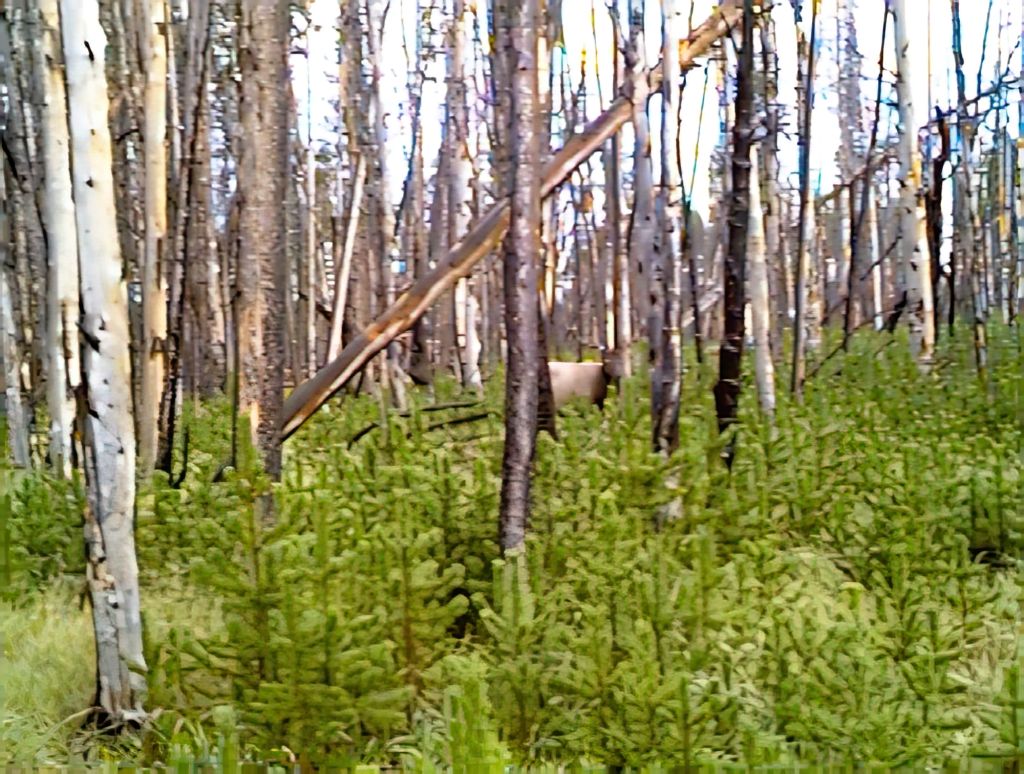 Ten years ago, a big fire (or, better, about 250 fires) burned about 36% of Yellowstone park. The fires
burned from July to November 1988. On one side, it is very sad to look at the dead trees, standing there. On the other, the pine seed need high temperature
to burst. So, if you look more attentively, you notice that on the same ground where the dead trees stand, there is a huge population of young, nine-year-old
pines, just preparing to replace the old ones. And then you feel good. Ten years ago, a big fire (or, better, about 250 fires) burned about 36% of Yellowstone park. The fires
burned from July to November 1988. On one side, it is very sad to look at the dead trees, standing there. On the other, the pine seed need high temperature
to burst. So, if you look more attentively, you notice that on the same ground where the dead trees stand, there is a huge population of young, nine-year-old
pines, just preparing to replace the old ones. And then you feel good.
|
|
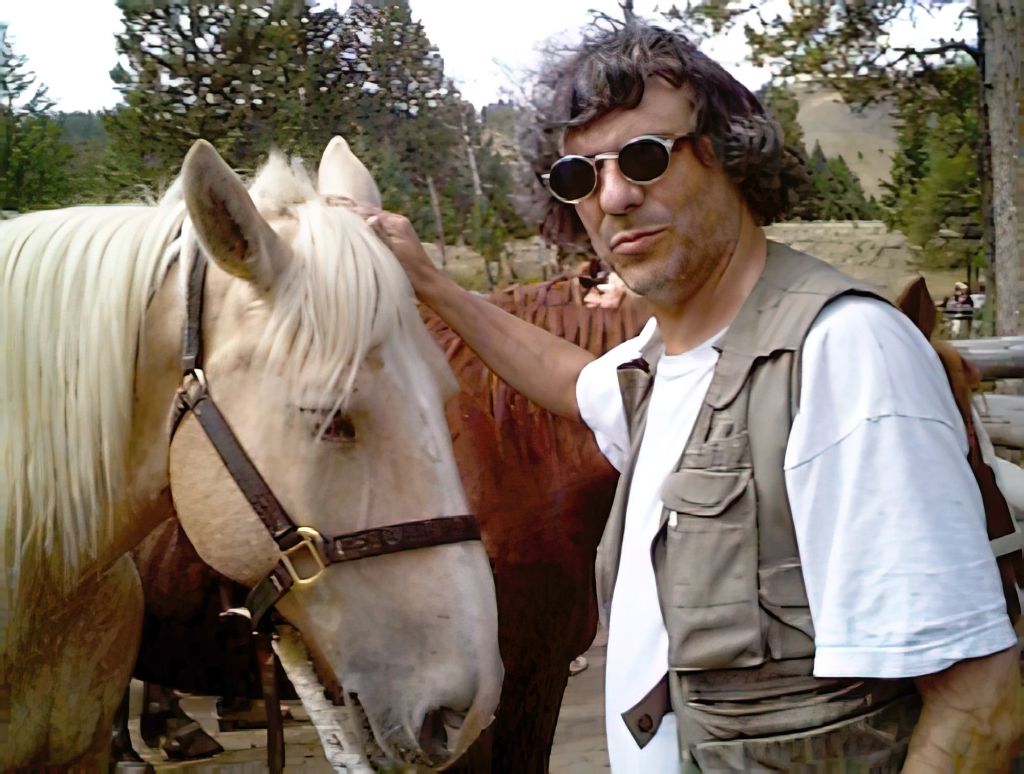 After breakfast (awful, but then you don't go to Yellowstone to eat), we decided to go for a horse riding experience. It is an
experience because Roberto had never been on a horse, and my last time horse-riding was about 12 years ago (and it was not very good even then). No need to panic, we told to ourselves. They are more than
used to horses. It worked until we saw the size of the horses. Well, carpe diem. After brief instructions on how to steer the horses, we were all mounted (about 21 tourists,
more three guides). Roberto got a big one, Tuck. A piece of cake. The horses knew very well what to do, in fact much better than we do. We went in a lazy big loop around Pleasant Valley, in single line. After breakfast (awful, but then you don't go to Yellowstone to eat), we decided to go for a horse riding experience. It is an
experience because Roberto had never been on a horse, and my last time horse-riding was about 12 years ago (and it was not very good even then). No need to panic, we told to ourselves. They are more than
used to horses. It worked until we saw the size of the horses. Well, carpe diem. After brief instructions on how to steer the horses, we were all mounted (about 21 tourists,
more three guides). Roberto got a big one, Tuck. A piece of cake. The horses knew very well what to do, in fact much better than we do. We went in a lazy big loop around Pleasant Valley, in single line.  The only thing we had to do was to keep the horses
from grazing, they did all the rest. A coyote was a bit startled by our presence there, but that was all. The problem was to get off the horses. My left knee was jelly, and Roberto was not much better. The only thing we had to do was to keep the horses
from grazing, they did all the rest. A coyote was a bit startled by our presence there, but that was all. The problem was to get off the horses. My left knee was jelly, and Roberto was not much better.
|
|
 We could see a big rainstorm forming in the sky,
and we decided to leave Yellowstone by the night. But we couldn't leave without seeing the Old Faithful. Yellowstone has the larger We could see a big rainstorm forming in the sky,
and we decided to leave Yellowstone by the night. But we couldn't leave without seeing the Old Faithful. Yellowstone has the larger 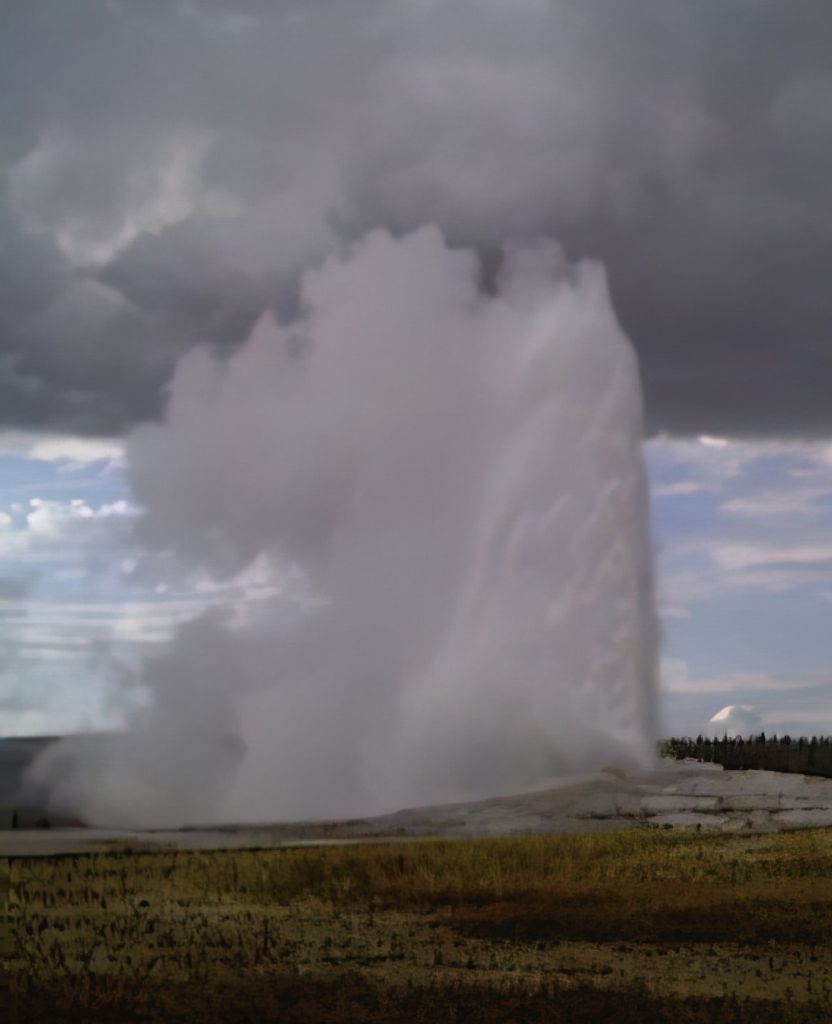 concentration of geyser
in the world, and the Old Faithful is the most famous, because of its reliability. It performs every 73 minutes (average, it can vary from 45 to 105 minutes). We drove to
the Geyser basin, avoiding the bison on the road (they are everywhere!). Of course, the storm started 10 minutes before the Old Faithful's performance, and we stayed there,
stoically, totally wet, waiting for it. A small splash and then-flush! A high column of hot water and steam goes up. concentration of geyser
in the world, and the Old Faithful is the most famous, because of its reliability. It performs every 73 minutes (average, it can vary from 45 to 105 minutes). We drove to
the Geyser basin, avoiding the bison on the road (they are everywhere!). Of course, the storm started 10 minutes before the Old Faithful's performance, and we stayed there,
stoically, totally wet, waiting for it. A small splash and then-flush! A high column of hot water and steam goes up.
|
|
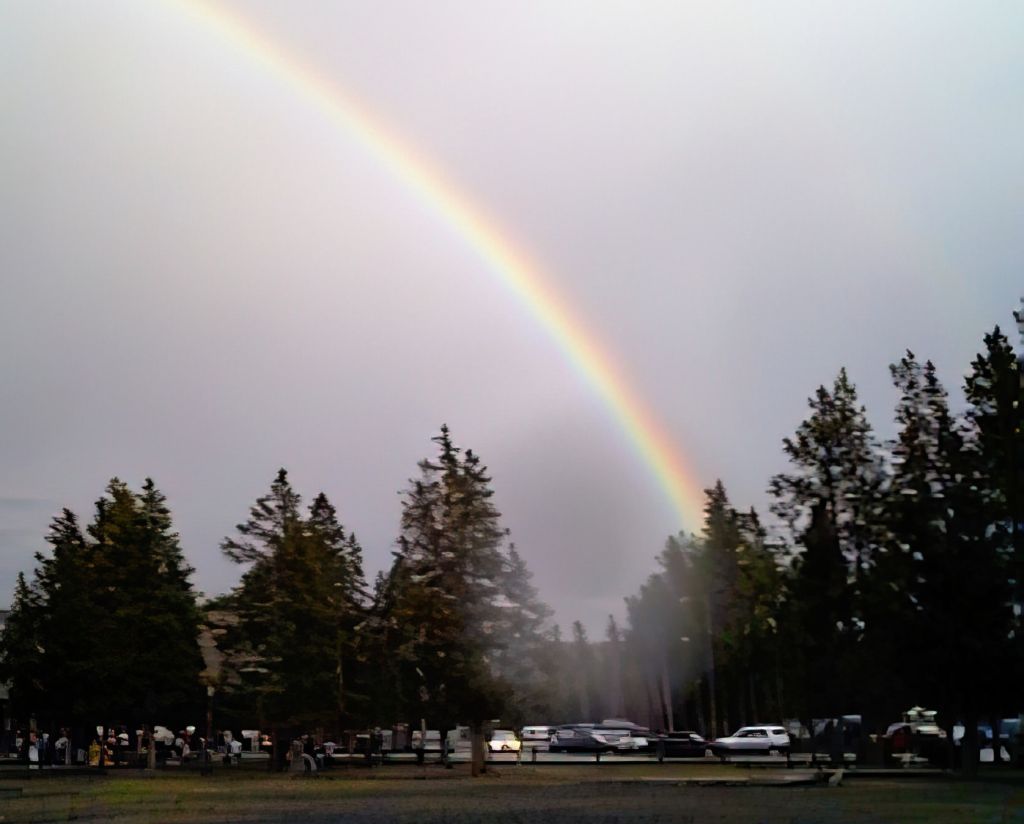 The rain stopped almost immediately after and we
could walk on the Geyser Hill. I confess that I was more impressed by the whole hill and its set of geyser than by the Old Faithful. The colors and shapes of the geysers and hot springs vary for each
one of them, there are no two identical geyser. Hot water and the special chemical composition make a great environment for algae and bacteria, which causes the different colors, deep red, black, pure
white, bright yellow, it depends of the combination of minerals and bacteria. The rain stopped almost immediately after and we
could walk on the Geyser Hill. I confess that I was more impressed by the whole hill and its set of geyser than by the Old Faithful. The colors and shapes of the geysers and hot springs vary for each
one of them, there are no two identical geyser. Hot water and the special chemical composition make a great environment for algae and bacteria, which causes the different colors, deep red, black, pure
white, bright yellow, it depends of the combination of minerals and bacteria.
|
|
We left Yellowstone before the next big rainstorm. Next stop, Idaho Falls, ID. A motel in the night, and it seems that our vacations are over.
|
|
